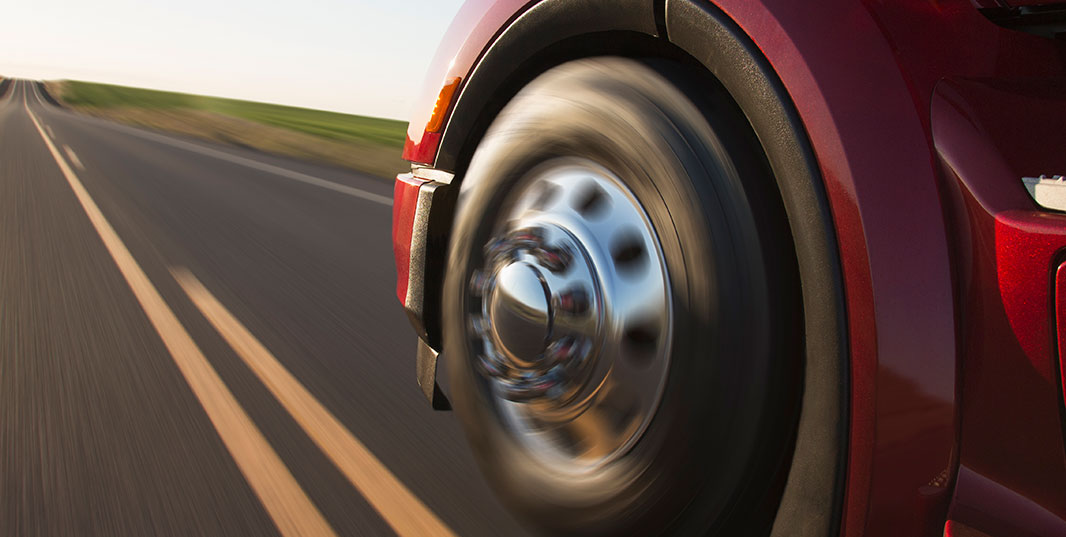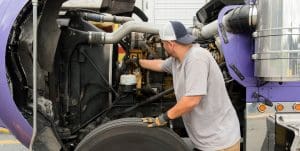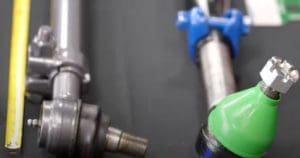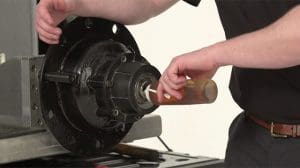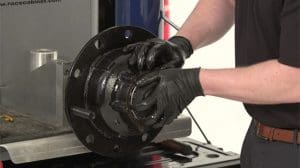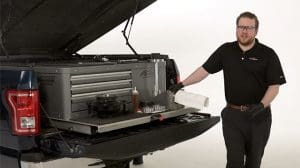At STEMCO, we keep safety at the forefront of all we do. It’s what motivates us to engineer reliable products that you can trust. In our commitment to “Making the Roadways Safer,” one way that we help fleet maintenance managers is by providing training and education in healthy maintenance practices.
The most common questions we receive tend to focus on suspension and wheel end components. Over time, it’s expected that normal wear and tear will either require some equipment maintenance or signify that it’s time to replace a certain part or component altogether. With this in mind, here’s a few helpful tips on what to look out for when monitoring your fleets in the months ahead.
Suspension: How to know when it’s time to change your king pins
A king pin’s primary responsibility is to keep the truck’s steering and alignment in place. It’s a combined bearing system that supports the loads of the axle and allows the steering of the vehicle. Given its functionality, a failing king pin will first show as unusual wear on your tires. Specifically, a worn king pin creates an inconsistent camber angle resulting in one-sided wear, feathering, and diagonal wear patterns.
Another way to identify a failing king pin is to listen for unusual sounds, like clanging, popping, or grinding. These sounds tend to come from the steering knuckle or king pin assembly itself. These sounds can be heard during turning and front axle bounce during normal operation if the king pins or bushings are excessively worn. This is often due to improper fit between the king pin, the bushing, and the steering knuckle.
Lastly, watch for any steering issues, commonly noted by the vehicle pulling to one side like it’s driving itself. Steering issues can be hazardous, as they may delay driver response time, create an overcorrection response, and contribute to driver fatigue. Hazardous road conditions also accentuate this problem, so make sure you address any steering issues right away, especially if you’re heading into the winter season. The best way to prolong the life of king pins is to use a quality grease and have a consistent preventative maintenance schedule to make sure they are being properly lubricated.
Wheel ends: When should you replace wheel seals or bearings?
If there’s one thing we know, it’s wheel ends. In fact, we’ve been supplying the trucking industry with reliable wheel seals for more than 70 years. When it comes to wheel seals or bearings, the most telling sign of failure is to look for visible signs of leakage. Check around the window ring or the hub cap window itself. The sight glass will indicate your current oil level. Think of this as the dipstick of the engine on your car. You can reference both the add and full-level lines on the hub cap to see if any leakage has occurred.
During preventative maintenance, it is recommended to jack up the axle and rotate the hub, and check for smooth wheel rotation and listen for noise in the wheel end. You can also place a bar under the tire and see if there is any movement in the wheel end. It is important to grease the king pins on steer axles because wear in the king pins can feel like movement in the hub. If excessive movement is found in the hub, it is best to pull the wheel end down to a bare hub and check the end play of the bearings with a dial indicator.
Next, examine the hub cap flange for any visible signs of damage that might have occurred from contact or over-torquing the hub cap bolts. Secondary signs of leakage may be present at this point. Some misting in this area can happen with a damp seal, but a leaking seal will have oil dripping from the bottom, likely contaminating the brake shoes. If your brake shoes are soaked with oil, this is the proper time to remove them.
The final inspection step is to remove the hub cap. This will expose the full hub cap gasket behind it. Inspect the cap for any signs of bulging, bubbling, or cracking. Next, inspect the hub flange. It should be flat and straight. You’ll want to look for any signs of warping or waffling that may indicate excessive heat generation, as this will be a key indicator that a change is needed.
Trailer Hubs that are lubricated in Semi-Fluid grease should be inspected annually by removing the hub cap, and outer bearing per TMC RP 631C procedure.
Preventive maintenance: Staying on schedule
As the roads continue to see more commercial vehicles than ever before, it’s becoming all the more important to stay on top of routine maintenance schedules and recommended inspections. Healthy maintenance practices are key to ensuring safety and optimal over-the-road performance for your vehicles. Logging more miles and scheduling additional shipments can be great ways to increase profitability, however, the extra hours can make it easier to disrupt routine maintenance schedules.
While all might be well with the “big-ticket” items, don’t forget to address smaller issues like dirty air filters, bad spark plugs, failing oxygen sensors, clogged fuel injectors, and defective coolant sensors or engine thermostats. Most of these have some sort of warning light or indicator when attention is needed, but as with most maintenance-related topics, it’s better to be proactive and plan ahead.
If you have any questions or would like additional information, please contact us.


